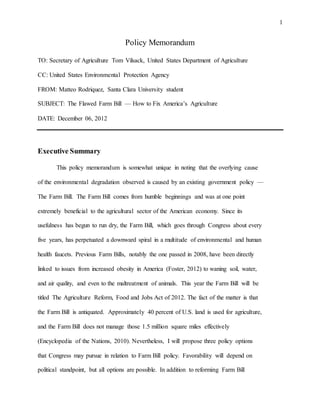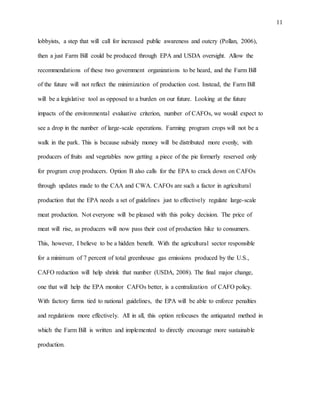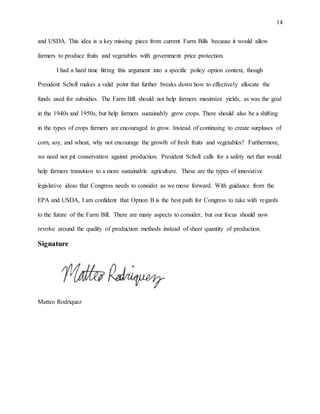This policy memorandum analyzes three options for reforming the Farm Bill: 1) No change (Option A), 2) Allow Congress to fix issues (Option B), and 3) Give EPA authority over the Farm Bill (Option C). Currently, the Farm Bill subsidizes commodity crops like corn and soy, promoting large factory farms (CAFOs) that degrade the environment and public health. Option B is presented as the best approach, reducing subsidies and rewarding conservation to decrease CAFO numbers and better allocate funds.







![8
Figure 1 Source: (Imhoff, 2007) [Congressional Research Service] (Data averaged over 2000, 2002, 2003, 2005,
2006).
The “Food Stamps and Nutrition” category takes up the largest portion of funding, and this need
not change. The categories that are factors in positive policy change (the categories that change
with Policy Options B and C) are Commodity and Foreign Agriculture, Conservation, and Food
Safety. Options B and C call for increased conservation spending accompanied by either less
commodity and subsidy spending, more evenly distributed subsidy funding (not limited to
program crops), or both.](https://image.slidesharecdn.com/9c783e65-c83f-4aca-82eb-9ae7642836ed-150428210926-conversion-gate02/85/Policy_Memorandum-8-320.jpg)







